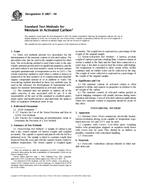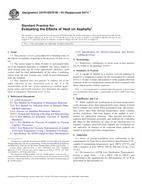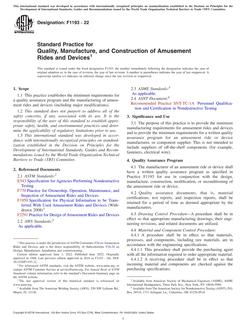1.1 These test methods describe the chemical analysis of nickel, cobalt, and high-temperature alloys having chemical compositions within the following limits:
| Element | Concentration Range, % |
| Aluminum | 0.005 to 7.00 |
| Beryllium | 0.001 to 0.05 |
| Boron | 0.001 to 1.00 |
| Calcium | 0.002 to 0.05 |
| Carbon | 0.001 to 1.10 |
| Chromium | 0.10 to 33.00 |
| Cobalt | 0.10 to 75.00 |
| Copper | 0.01 to 35.00 |
| Iron | 0.01 to 50.00 |
| Lead | 0.001 to 0.01 |
| Magnesium | 0.001 to 0.05 |
| Manganese | 0.01 to 3.0 |
| Molybdenum | 0.01 to 30.0 |
| Niobium (Columbium) | 0.01 to 6.0 |
| Nickel | 0.10 to 98.0 |
| Nitrogen | 0.001 to 0.20 |
| Phosphorus | 0.002 to 0.08 |
| Sulfur | 0.002 to 0.10 |
| Silicon | 0.01 to 5.00 |
| Tantalum | 0.005 to 1.00 |
| Tin | 0.002 to 0.10 |
| Titanium | 0.01 to 5.00 |
| Tungsten | 0.01 to 18.00 |
| Vanadium | 0.01 to 3.25 |
| Zinc | 0.001 to 0.01 |
| Zirconium | 0.01 to 2.50 |
1.2 The test methods in this standard are contained in the sections indicated as follows:
| Sections | |
| Aluminum, Total by the 8-Quinolinol Gravimetric Method (0.20 to7.00 %) | 62 to 69 |
| Chromium by the Atomic Absorption Method (0.018 to 1.00 %) | 100 to 109 |
| Chromium by the Peroxydisulfate Oxidation-Titration Method(0.10 to 33.00 %) | 110 to 118 |
| Cobalt by the Ion-Exchange-Potentiometric Titration Method (2 to75 %) | 34 to 41 |
| Cobalt by the Nitroso-R-Salt Photometric Method (0.10 to5.0 %) | 42 to 51 |
| Copper by Neocuproine Photometric Method (0.010 to 10.00 %) | 52 to 61 |
| Iron by the Silver Reduction Titrimetric Method (1.0 to 50.0 %) | 127 to 134 |
| Manganese by the Metaperiodate Photometric Method (0.05 to2.00 %) | 8 to 17 |
| Molybdenum by the Ion Exchange-8-Hydroxyquinoline Gravi-metric Method (1.5 to 30 %) | 119 to 126 |
| Molybdenum by the Photometric Method (0.01 to 1.50 %) | 88 to 99 |
| Nickel by the Dimethylglyoxime Gravimetric Method (0.1 to84.0 %) | 70 to 77 |
| Niobium by the Ion Exchange-Cupferron Gravimetric Method(0.5 to 6.0 %) | 135 to 142 |
| Silicon by the Gravimetric Method (0.05 to 5.00 %) | 27 to 33 |
| Sulfur by the Combustion-Iodate Titration Method (0.006 to0.1 %) | 18 to 26 |
| Tantalum by the Ion Exchange-Pyrogallol SpectrophotometricMethod (0.03 to 1.0%) | 143 to 151 |
| Tin by the Solvent Extraction-Atomic Absorption Method (0.002to 0.10 %) | 78 to 87 |
1.3 Methods for the determination of several elements not included in these test methods can be found in Test Methods E 30, E 76, and E 1019.
1.4 Some of the concentration ranges given in are too broad to be covered by a single method, and therefore, these test methods contain multiple methods for some elements. The user must select the proper test method by matching the information given in the scope and interference sections of each test method with the composition of the alloy to be analyzed.
1.5 The values stated in SI units are to be regarded as standard. In some cases, exceptions allowed in Practice E 380 are also used.
1.6 This standard does not purport to address all of the safety concerns, if any, associated with its use. It is the responsibility of the user of this standard to establish appropriate safety and health practices and determine the applicability of regulatory limitations prior to use. Specific hazard statements are given in Section 7 and in special caution and warning paragraphs throughout these test methods.
Product Details
- Published:
- 10/01/2003
- Number of Pages:
- 36
- File Size:
- 1 file , 330 KB


